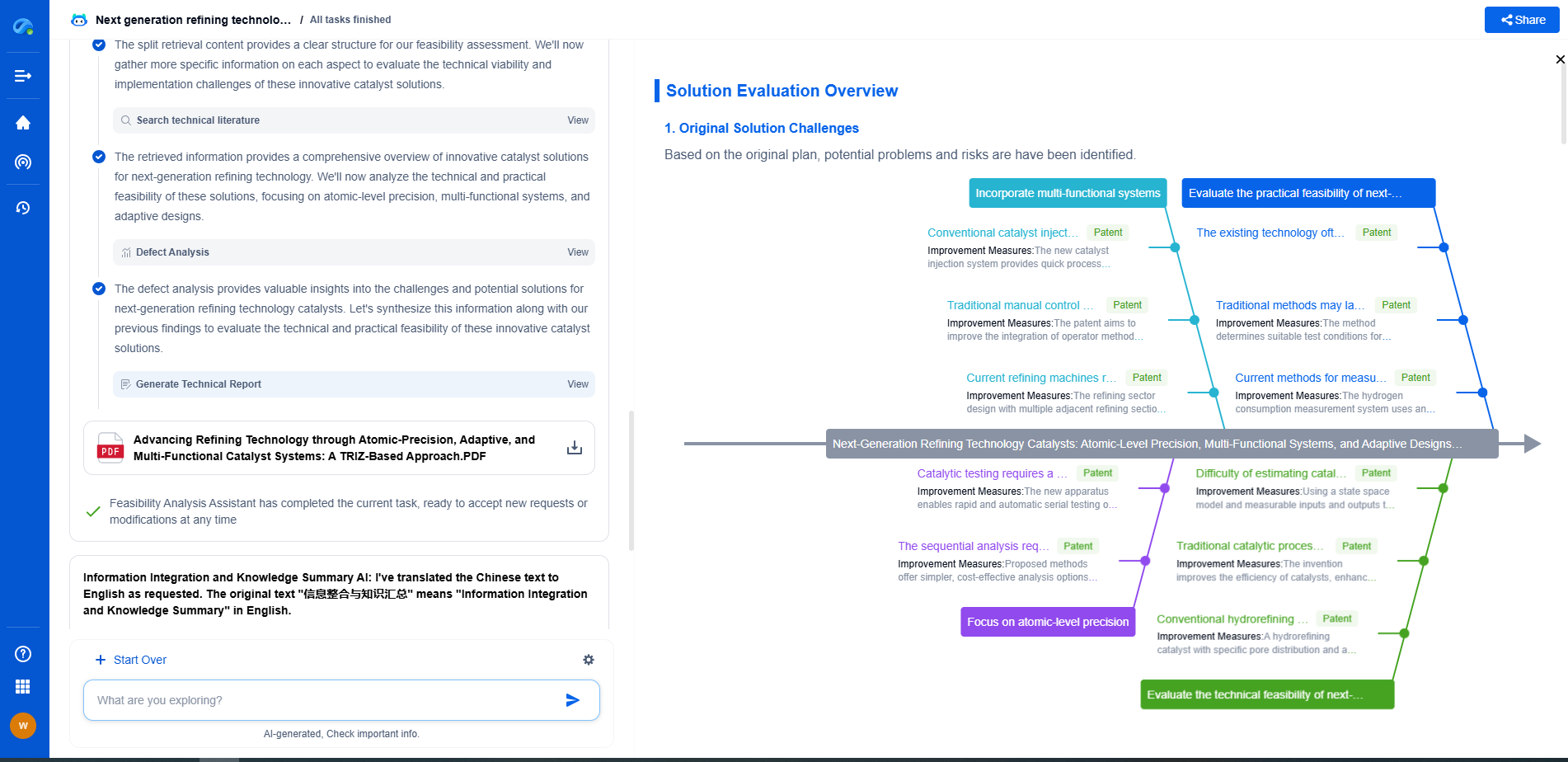What Is Hall Effect Sensing and How Does It Work in Magnetic Field Measurements?
JUL 9, 2025 |
In the world of sensor technology, Hall effect sensing plays a crucial role, especially when it comes to measuring magnetic fields. Its applications are vast, ranging from industrial automation to consumer electronics. But what exactly is Hall effect sensing, and how does it function in the realm of magnetic field measurements? This article delves into the principles of Hall effect sensing, its operational mechanics, and its diverse applications.
Understanding the Hall Effect
To comprehend Hall effect sensing, it is essential to first understand the Hall effect itself. Discovered by Edwin Hall in 1879, the Hall effect describes the generation of a voltage difference (known as Hall voltage) across an electrical conductor when it is placed in a magnetic field perpendicular to the flow of electric current. This phenomenon occurs due to the Lorentz force, which acts on the charge carriers (usually electrons) within the conductor, causing them to accumulate on one side and creating a potential difference.
The Basic Principle of Hall Effect Sensors
Hall effect sensors capitalize on this phenomenon to detect and measure magnetic fields. At the heart of a Hall effect sensor lies a thin strip of conducting material, often made of semiconductor compounds like gallium arsenide. When a magnetic field is applied perpendicular to the current flowing through this conducting strip, a Hall voltage is generated. This voltage is directly proportional to the strength of the magnetic field, allowing the sensor to measure its magnitude.
Types of Hall Effect Sensors
There are various types of Hall effect sensors tailored to different applications. The most common types include:
1. **Linear Hall Effect Sensors**: These sensors provide an output voltage that is linearly proportional to the strength of the magnetic field. They are widely used in applications requiring precise magnetic field measurements, such as in current sensing and position detection.
2. **Threshold Hall Effect Sensors**: Also known as switch-type Hall sensors, these sensors output a digital signal, switching on or off when the magnetic field exceeds a certain threshold. They are often used in applications like proximity sensing or as switches in electronic devices.
Applications of Hall Effect Sensing
Hall effect sensors are integral to a variety of fields due to their versatility and reliability. Some notable applications include:
1. **Automotive Industry**: In vehicles, Hall effect sensors are employed to measure the position of crankshafts, detect wheel speed, and monitor fluid levels. Their ability to operate in harsh environments makes them ideal for automotive applications.
2. **Consumer Electronics**: These sensors are found in devices like smartphones and laptops, where they are used to detect the position of lids or covers, enabling features such as screen auto-rotation or sleep mode activation.
3. **Industrial Automation**: Hall effect sensors are used in industrial settings for precise position and speed measurements of machinery, ensuring efficient and safe operation.
Advantages of Hall Effect Sensors
The popularity of Hall effect sensors can be attributed to several advantages they offer:
1. **Non-Contact Operation**: Since Hall effect sensors do not require physical contact with the magnetic source, they experience minimal wear and tear, leading to a longer lifespan.
2. **Wide Frequency Response**: These sensors can accurately measure magnetic fields over a wide range of frequencies, making them suitable for dynamic applications.
3. **Robustness and Reliability**: Hall effect sensors are resistant to environmental factors such as dust, moisture, and vibrations, ensuring consistent performance even in challenging conditions.
Challenges and Limitations
Despite their numerous advantages, Hall effect sensors are not without limitations. They can be affected by temperature variations, which may impact their accuracy. Additionally, their sensitivity is generally lower compared to some other types of magnetic sensors, making them less suitable for detecting extremely weak magnetic fields.
Conclusion
Hall effect sensing remains a cornerstone in the field of magnetic field measurement, offering a blend of precision, reliability, and versatility. From automotive systems to consumer electronics, its applications continue to expand, driven by the demand for efficient and non-invasive sensing solutions. As technology advances, Hall effect sensors are likely to evolve further, cementing their place in an array of industries worldwide.
Navigating the evolving world of electrical measurement—from high-precision signal integrity to advanced test protocols like BERT or TDR—demands more than just expertise; it demands smart tools.
Patsnap Eureka empowers you to keep up—by turning complex patent data, technical parameters, and industry signals into actionable insight. It’s your AI partner for exploring what’s next in test, measurement, and electrical diagnostics.
💡 Try Patsnap Eureka for free and see how it transforms the way you work with electrical measurement technologies.
- R&D
- Intellectual Property
- Life Sciences
- Materials
- Tech Scout
- Unparalleled Data Quality
- Higher Quality Content
- 60% Fewer Hallucinations
Browse by: Latest US Patents, China's latest patents, Technical Efficacy Thesaurus, Application Domain, Technology Topic, Popular Technical Reports.
© 2025 PatSnap. All rights reserved.Legal|Privacy policy|Modern Slavery Act Transparency Statement|Sitemap|About US| Contact US: help@patsnap.com

